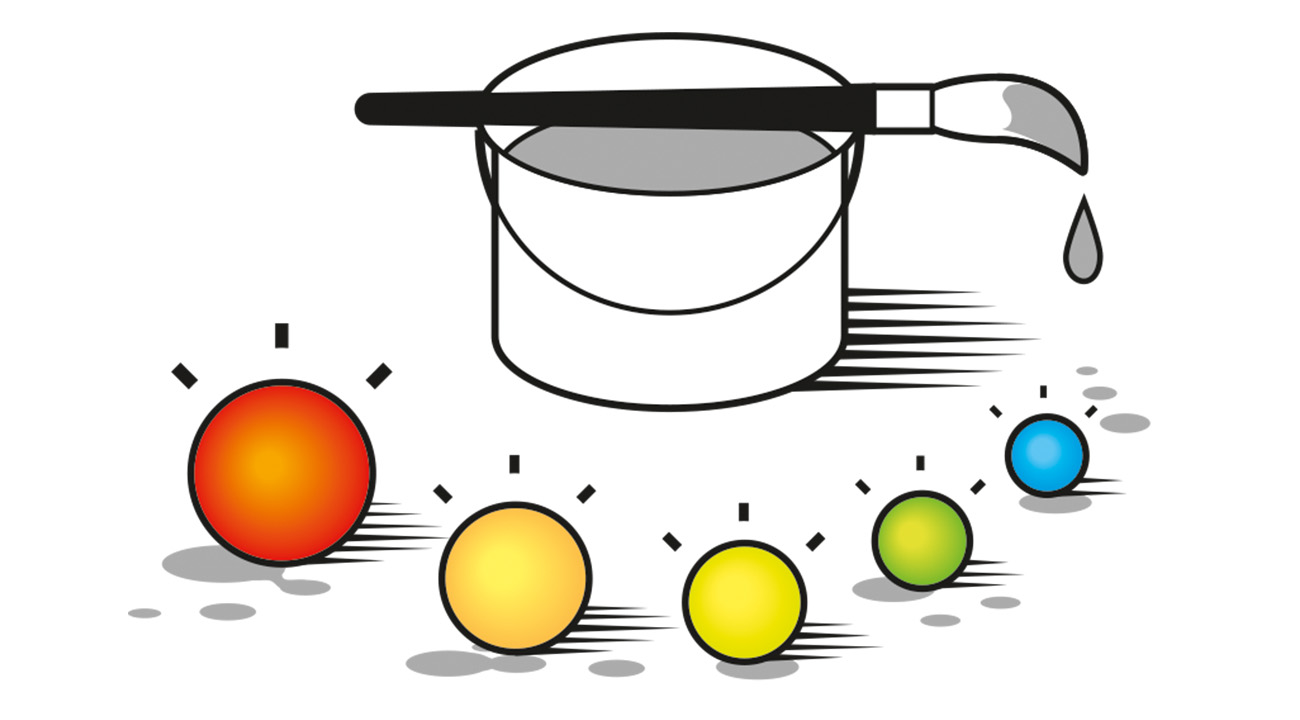
Scientists can make different sized quantum dots that each glow a different color thanks to quantum physics. (Credit: © Johan Jarnestad/The Royal Swedish Academy of Sciences)
The 2023 Nobel Prizes in chemistry and physics highlighted the interplay and collaboration that exist between the two fields thanks to the quantum underpinnings of all particle interactions. Physics and chemistry have both provided essential tools to each other in the effort to understand how tiny particles come together to form the complex world all around us.
On Tuesday, the Nobel Prize in physics was awarded to three physicists for the generation of light pulses so quick they opened a new window into the world of electrons interacting in matter. The prize will be split equally between Pierre Agostini, Ferenc Krausz and Anne L’Huillier.
"The work leading to the 2023 Physics Nobel Prize was a stunning example of quantum physics in action and truly a community effort," says JQI Fellow Wendell Hill, an expert on how atoms and electrons interact at very short time scales. "Congratulations Pierre, Ferenc and Anne, and the atomic, molecular, and optical physics community!"
Electrons not only form the pulsing current that powers electronics but also form the outermost layer of atoms and are responsible for the interactions that let diverse atoms combine into all the different molecules that give chemistry its rich variety.
But electrons live at a different pace from humans; they measure events in terms of attoseconds—a billionth of a billionth of a second. (There are more attoseconds in a single second than there have been seconds in the entire lifetime of the universe.) It's hard to observe something happening that fast. All the details get smeared together, like a photograph where the shutter was left open too long.
The three physicists who received the prize provided crucial contributions to making light pulses that are also measured in attoseconds. These tiny bursts of light are finally quick enough to provide a snapshot of electrons interacting in materials. Processes using these ultrashort pulses might provide new insights into electronics and help with identifying molecules, which could be useful in chemistry and medical diagnostics.
“We can now open the door to the world of electrons,” says Eva Olsson, Chair of the Nobel Committee for Physics. “Attosecond physics gives us the opportunity to understand mechanisms that are governed by electrons. The next step will be utilising them.”
On Wednesday, the Nobel Prize in chemistry was awarded to two chemists and a physicist for their experiments with quantum dots—collections of hundreds to a few thousand atoms that exhibit properties dictated by their size. Two dots made from identical atoms behave radically differently based on how big each dot is. The prize will be split equally between Moungi Bawendi, Louis Brus and Alexei Ekimov. The three researchers each performed experiments that were crucial to achieving our current understanding of quantum dots and the chemistry of how to fabricate them.
Quantum dots exist at such a small scale—millionths of a millimeter—that their properties require quantum physics to predict. In many ways they act like individual atoms with distinct states allowed by quantum mechanics and each state associated with a specific energy. Quantum dots’ flashiest property is the way that the size of the dot corresponds to the color of light it releases.
Quantum dots and their light emitting behavior have found their way into commercial technologies, including LED lamps, computer screens and TVs, and they also have uses in biochemistry, where they are used to map biological tissue. Researchers are continuing to explore the tiny structures in new experiments and to develop new technologies utilizing them.
“This Nobel Prize recognized extraordinary work to develop controlled quantum dot growth and a fundamental understanding of quantum size effects in these tiny particles, helping spawn the nanotechnology revolution," says JQI Fellow Garnett Bryant, an expert on quantum dots who leads the Atom Scale Devices Group at the National Institute of Standards and Technology.
These two prizes illustrate how, at a small enough scale, physics and chemistry are intimately intertwined and physicists and chemists often benefit from each other’s work. Physicists can develop tools like ultrafast light pulses that reveal the interactions that bind molecules together, and chemists can perform the experiments that realize the predictions of quantum physics.
For more information about the six winners and the research that these awards recognize, see the press releases from the Royal Swedish Academy of Sciences.
Story by Bailey Bedford
Coverage We’re Reading
Quanta Magazine
https://www.quantamagazine.org/nobel-prize-honors-inventors-of-quantum-dot-nanoparticles-20231004/
New York Times
https://www.nytimes.com/2023/10/03/science/nobel-prize-physics.html
https://www.nytimes.com/2023/10/04/science/nobel-prize-chemistry.html
PBS
https://www.pbs.org/newshour/science/watch-live-2023-nobel-prize-in-physics-winner-announced
Nature
https://www.nature.com/articles/d41586-023-03048-9